Clay and calamity
Cambridge’s Museum of Zoology harnesses the fragility of ceramic art to explore our planet’s environmental and ecological breaking points.
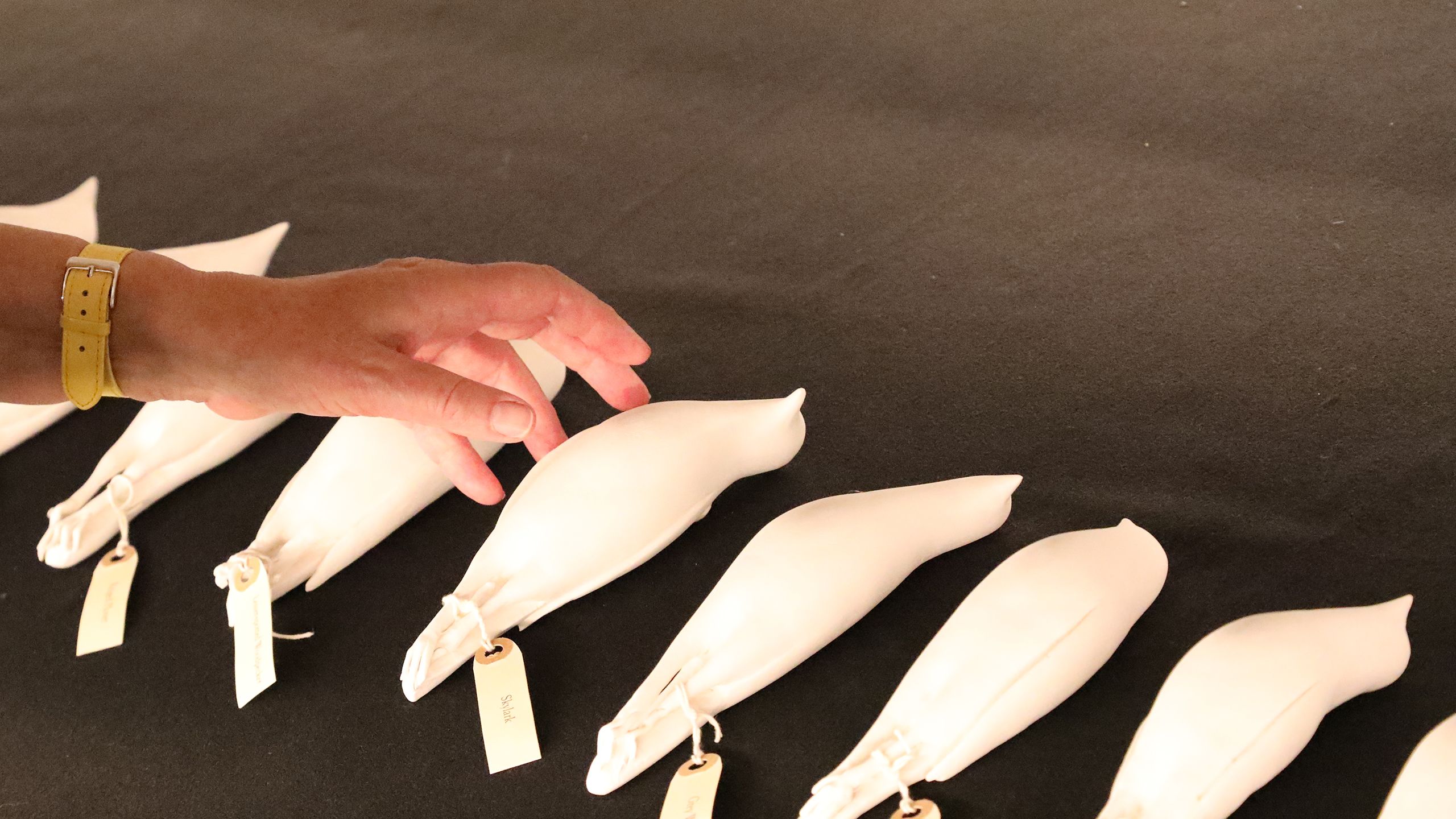
Artists break things, often accidentally but sometimes with destructive intent. The act of breaking can be soul-destroying or liberating, wasteful or creative, distracting or inspiring, but it is never meaningless.
Some breaks can be fixed, many cannot. Something that takes months to make can be destroyed in a split second of carelessness or fury. Artists have to work out what is worth mending, but also what techniques and materials to use. Mending is hard and skilful work.
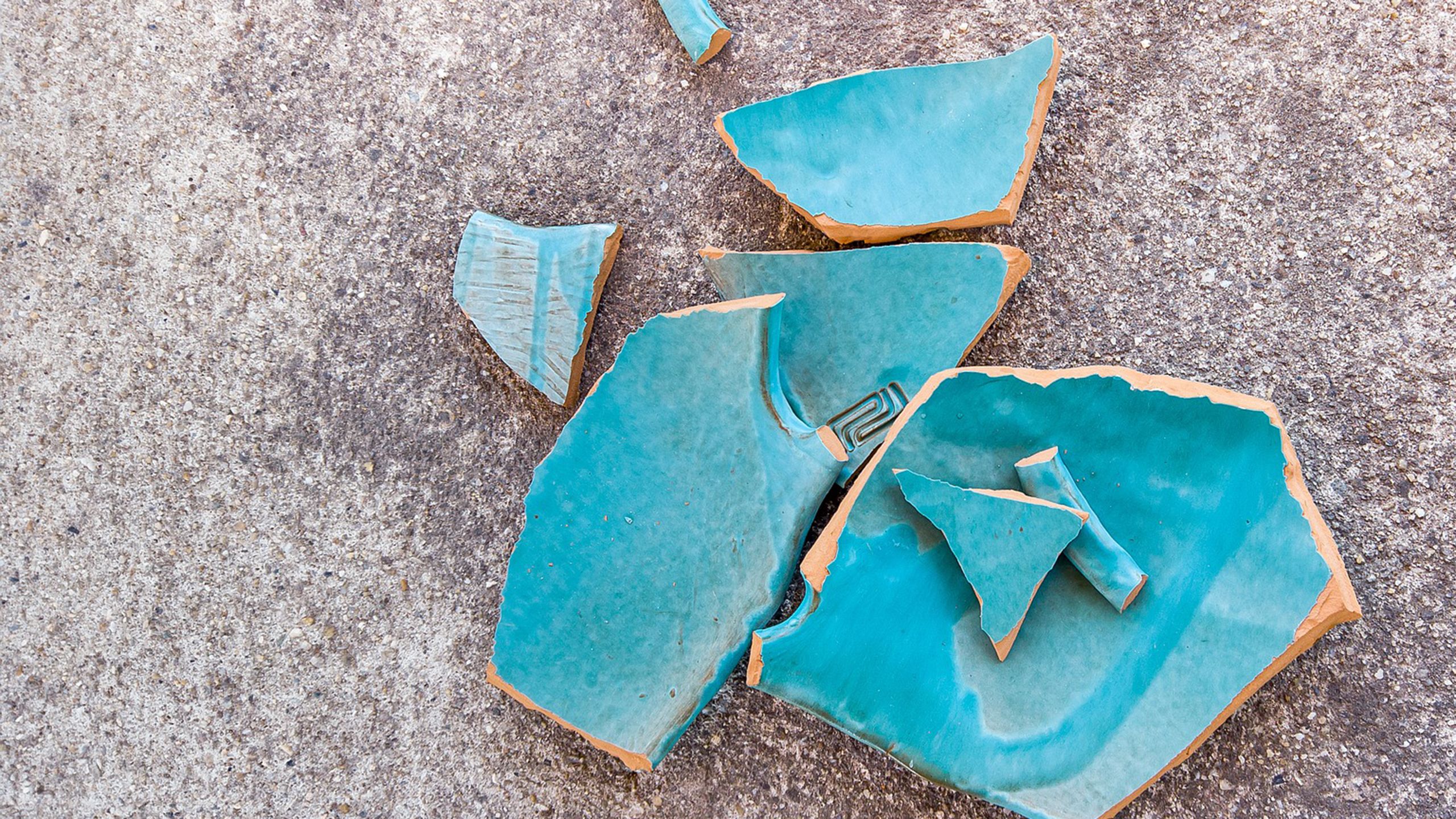
Beyond their studios, artists have always been interested in humanity’s propensity to break things, people and places; but now many are engaging with a truly unprecedented breaking point upon which the future of life on our planet teeters.
Forced to shut for close to a year by Covid-19 – a zoonotic disease inextricably linked to environmental issues – Cambridge’s Museum of Zoology has just reopened with a gulp-inducing, spine-chilling reminder that the ‘other’ crisis has not gone away.
Breaking Point: fragility in clay and nature (7th July – 3rd October 2021) weaves ceramic artworks by three contemporary British artists into the museum’s permanent collection of taxidermy, skeletons, fossils, pinned insects, eggs and intriguing glass jars.
The exhibition uses the fragility of fired clay, a material from and of the earth, to throw attention back on to ecological decline, ecosystem collapse and environmental change. The featured artists – Mella Shaw, Jayne Ivimey and Elspeth Owen – approach the idea of ‘breaking point’ from different angles to leave visitors feeling alarmed and horrified on the one hand, and hopeful on the other.
The exhibition pivots on Mella Shaw’s Janus Forms, a series of press-moulded, then smoke-fired ceramics, made during the pandemic.
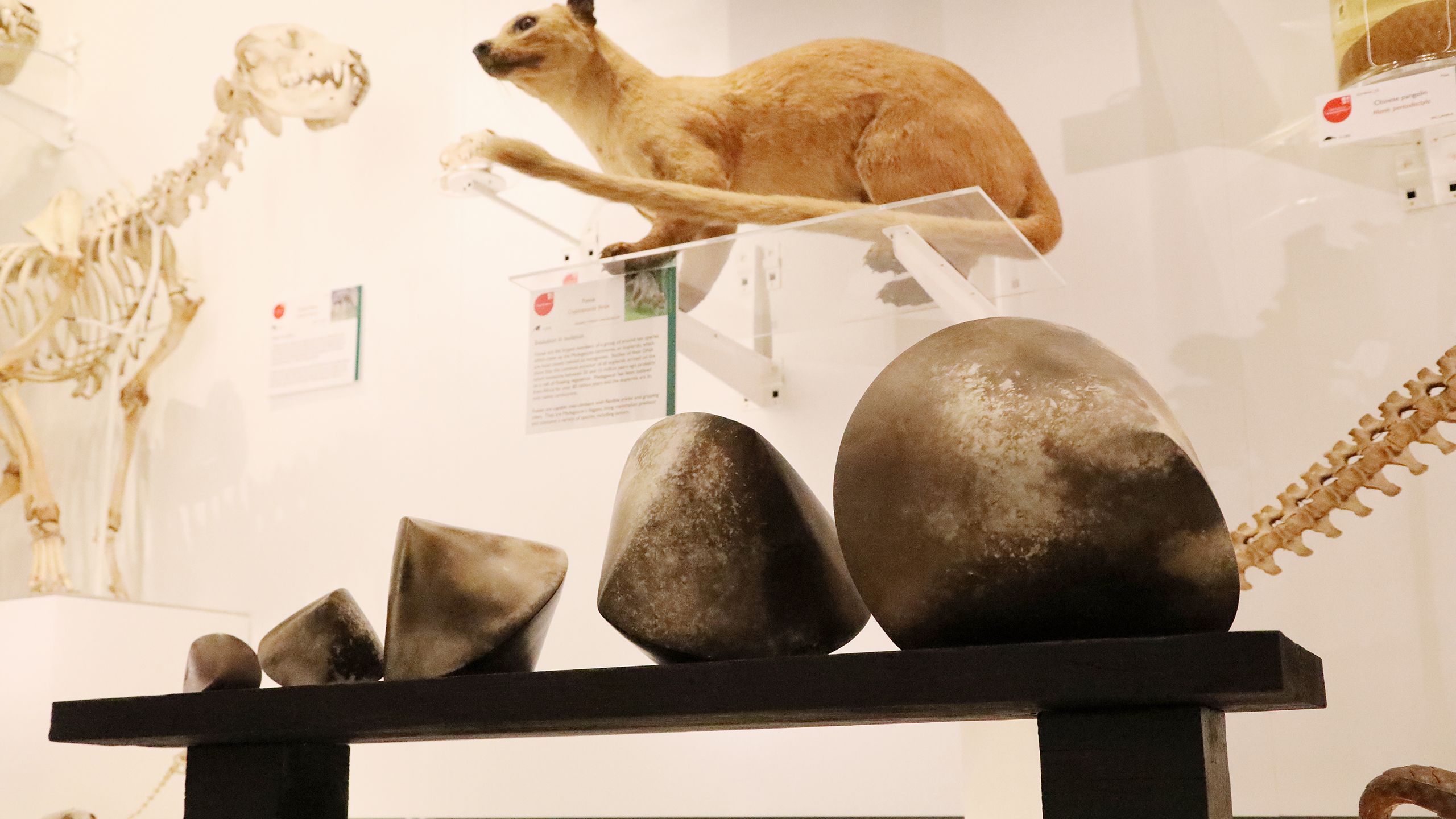
These eerily beautiful pieces, unobtrusively nestled among familiar stuffed mammals and the skeletons of extinct beasts, could be mistaken for giant clams but they are here to remind us that we are living on a knife-edge. These pieces look stable but one face looks to the past, the other to an uncertain future, and the smallest touch is enough to send them spiralling into danger.
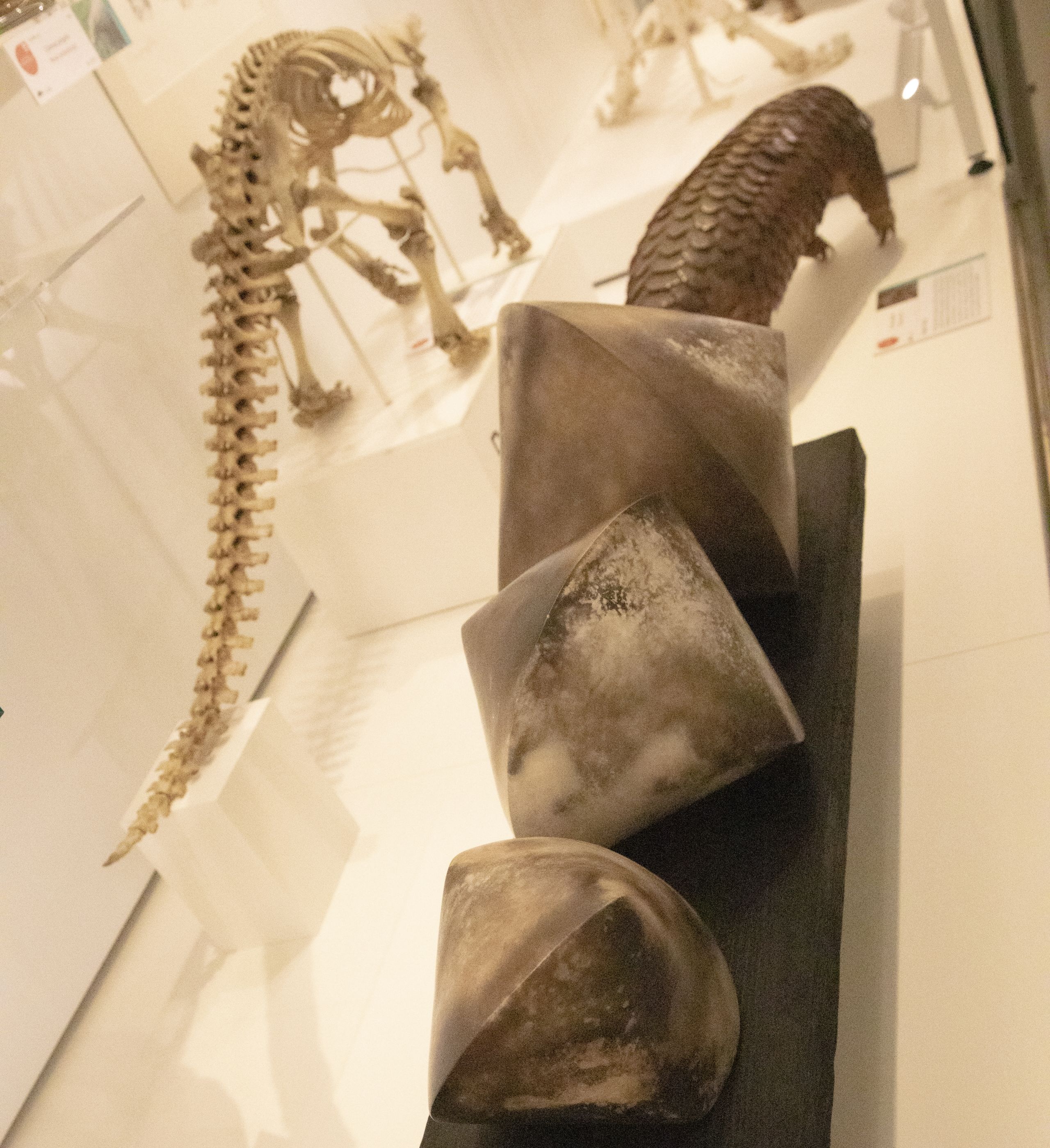
Mella Shaw's Janus Forms (2020/21) on display in the Museum of Zoology
Mella Shaw's Janus Forms (2020/21) on display in the Museum of Zoology
Shaw’s other contribution to the exhibition, HARVEST, shines a spotlight on the very real ecological death spiral happening in our oceans as a result of plastic pollution. As visitors pass through the museum shop, they will see a display case containing dozens of ceramic bottles, perfectly imitating plastic, piled high with dead, dying and fleeing ceramic fish. Shaw started work on the piece in 2016 before David Attenborough’s Blue Planet series and before the issue of plastic pollution became the prominent issue it is today.
Shaw says: “I read this statistic from the Ellen MacArthur Foundation that by 2050, there’ll be a greater weight of plastic in the ocean than fish. The fact that they were talking about weight, not volume, was just so much more horrifying. So all of my ceramic fish are roughly the same weight as real fish.”
Shaw used 36 moulds to produce the containers and chose shapes that both resemble fish bodies and remind us of objects we have in our own homes, including milk and bleach containers.
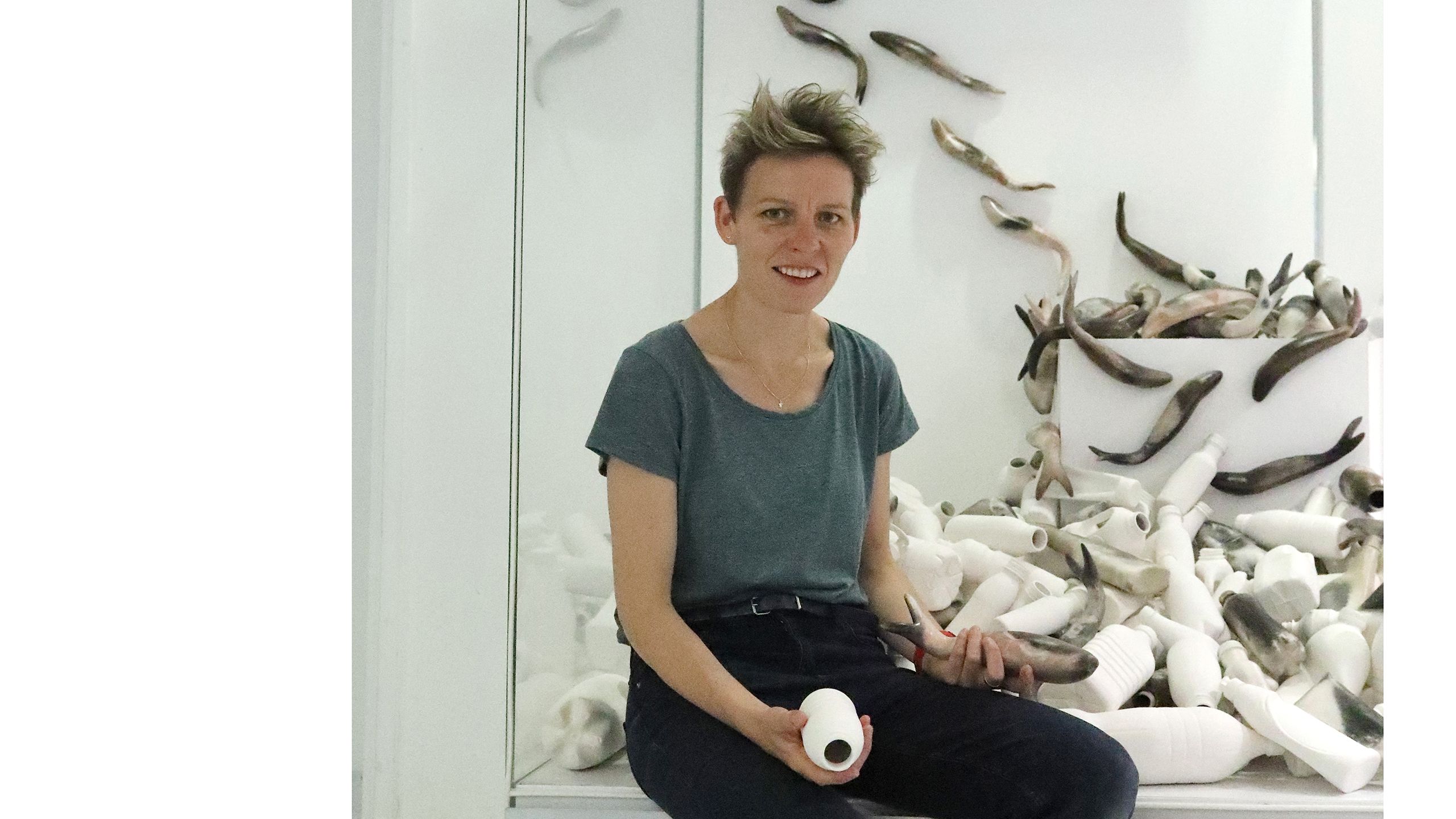
Scraping down imperfections makes imitating plastic with clay time-consuming and a labour of love, the opposite of mass production. Working flat out, Shaw can only make fifteen a day.
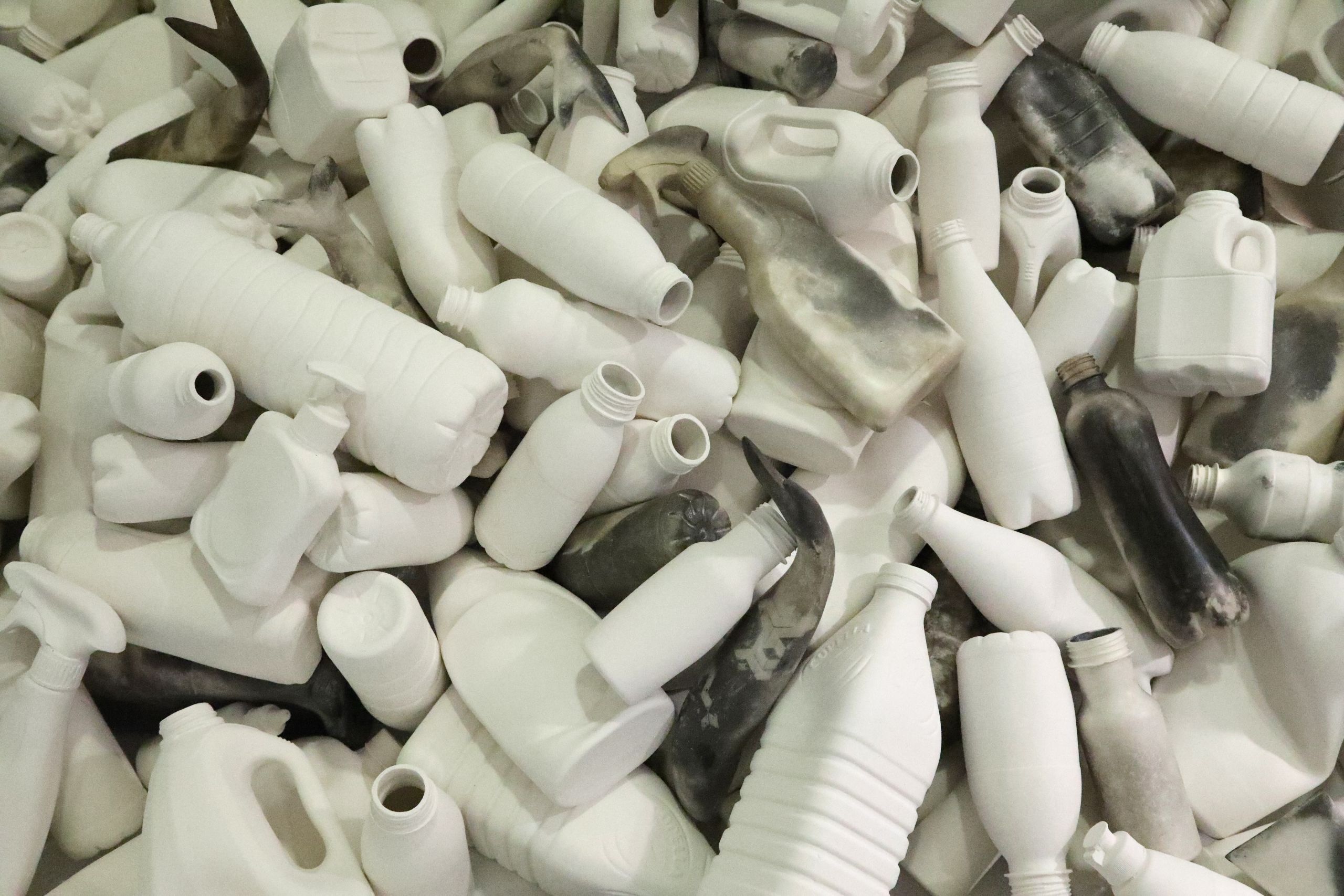
Ceramic plastic bottles and fish in Mella Shaw's exhibit: HARVEST (2017/18)
Ceramic plastic bottles and fish in Mella Shaw's exhibit: HARVEST (2017/18)
“I’ve always been interested in thresholds and tipping points”, Shaw says: “I’d been making quite formal pieces that were about balance and I just realised I had to address our most important tipping point: the environmental crisis. I also want to connect with people emotionally so they understand what this means on a different level. You can read statistics and eventually you become numb to it but hopefully this makes people go “Oh, now I can actually see what we’re talking about”.”
“People come here to study or just enjoy the specimens, they’re not expecting to see fine art in this context. So that jolt can change someone’s thinking in the moment. And because ceramics are so fragile, I think we can use that as a metaphor to engage people in a much more visceral, emotional way.”
A few metres away, a low display case stretches from one end of the room to the other. Peering in, visitors are met by a spine-chilling line-up of endangered British bird species, lovingly sculpted in bisque fired stoneware clay by Jayne Ivimey.
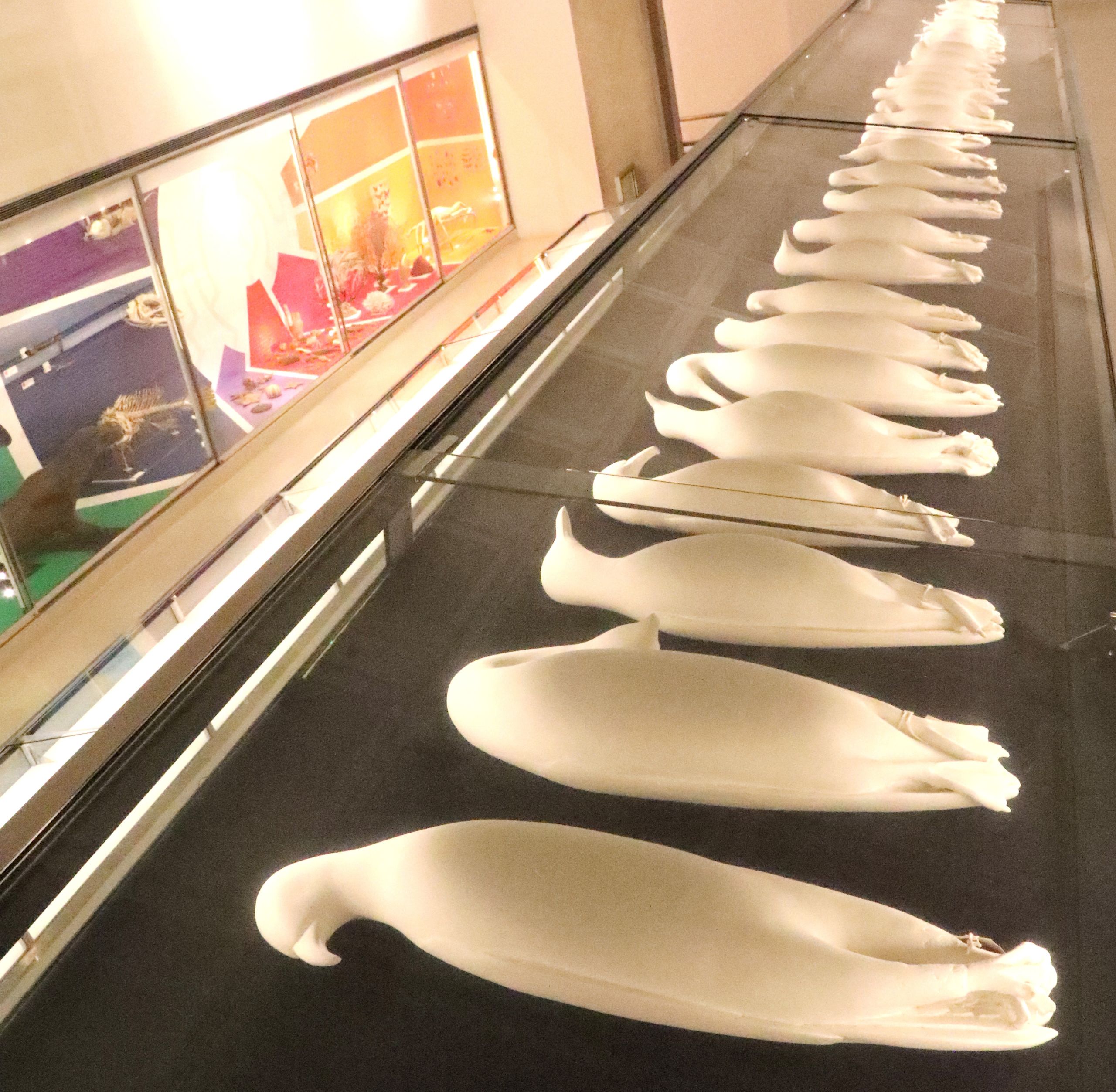
Jayne Ivimey's The Red List of Endangered British Birds (2019) displayed in the Museum of Zoology
Jayne Ivimey's The Red List of Endangered British Birds (2019) displayed in the Museum of Zoology
When they were exhibited in Norwich Cathedral in 2020, Ivimey watched some visitors shuffling from one bird to the next, tears rolling down their faces. It is easy to understand why. Inspired by the marble effigies of knights, noblemen and royals, Ivimey finished her birds in a ghostly white, crossed their legs and positioned them on their backs.
A few years ago Ivimey was working in New Zealand on a bird conservation programme and at one point volunteered to clean birds caught in an oil spill. “I handled hundreds of birds and got very intimate with them”, she says. “I present my ceramic birds on their backs and that’s how you have to hold real birds when you are cleaning them. We’re not used to seeing birds like this – it’s unsettling.”
When Ivimey returned to the UK, she found that sixteen more birds had been added to the Red List bringing the total to seventy (three have recently been moved to the less precarious Amber list). Curious to know what these at risk birds were, she visited the Natural History Museum at Tring and found, to her horror, that she was familiar with all of them.
“I couldn’t believe they were on the list”, she says. “Then I started wondering what these birds would look like if you saw them lined up all together, so I started making them. It just seemed like a good way to think about loss, extinction and the effects of climate change.”
“I wanted to embody the beauty of the birds but also record how specifically engineered they are to each of their little niches in the natural world.” - Jayne Ivimey
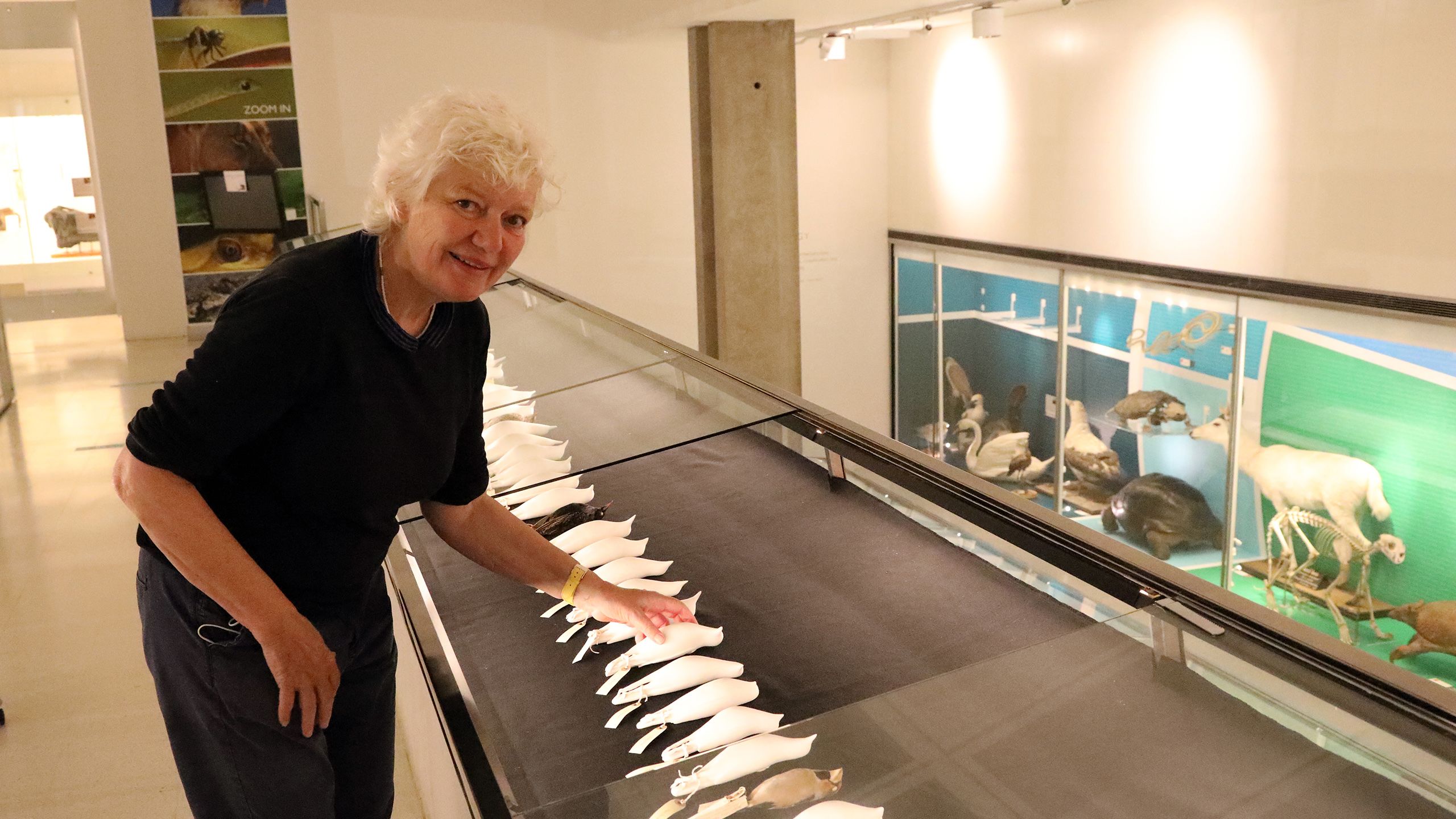
Stripped of their colourful plumage, these birds force you to appreciate, perhaps for the first time, the extraordinary elegance and uniqueness of beaks, necks, breasts, wings, legs and feet, all recreated with astonishing accuracy.
Ivimey says: “It is a long process, they are very difficult to make because they are hollow. I often had to make two or three of the same bird because they would emerge from the kiln cracked. And they are so fragile, particularly their tiny toes.”
“I’m very fond of the kittiwakes because they are so brave, they spend so much of their life at sea, and they just come back to breed. I also find this white-fronted goose particularly moving because it seems so big and robust and you think how could they disappear? But they are having a terrible struggle.”
Despite being a trained artist, Ivimey feels much more of an environmentalist these days: “I’d like to use my skills to make people more aware.”
This activist spirit is just as palpable in the work of Elspeth Owen. In the 1980s she helped set up the Greenham Common Women’s Peace Camp to protest against nuclear weapons. Now she is worried that we will manage to destroy the planet even without nuclear war. At the same time Owen is full of energy and hope, confident that young people can steer humanity away from disaster.
Owen’s contribution to the exhibition, entitled ‘Making-Do’, involves shards of a large ceramic egg – made by the artist and then deliberately smashed – being carefully placed among the museum’s resident specimens. Another of Owen’s clay eggs sits intact alongside a real elephant bird’s egg re-assembled in 1960 by David Attenborough in Madagascar. Visitors are treated to a film clip showing Attenborough taping fragments of this gigantic egg back together in baking heat. For Owen, this provided an inspiring case study of ‘making-do’ in a hostile environment.
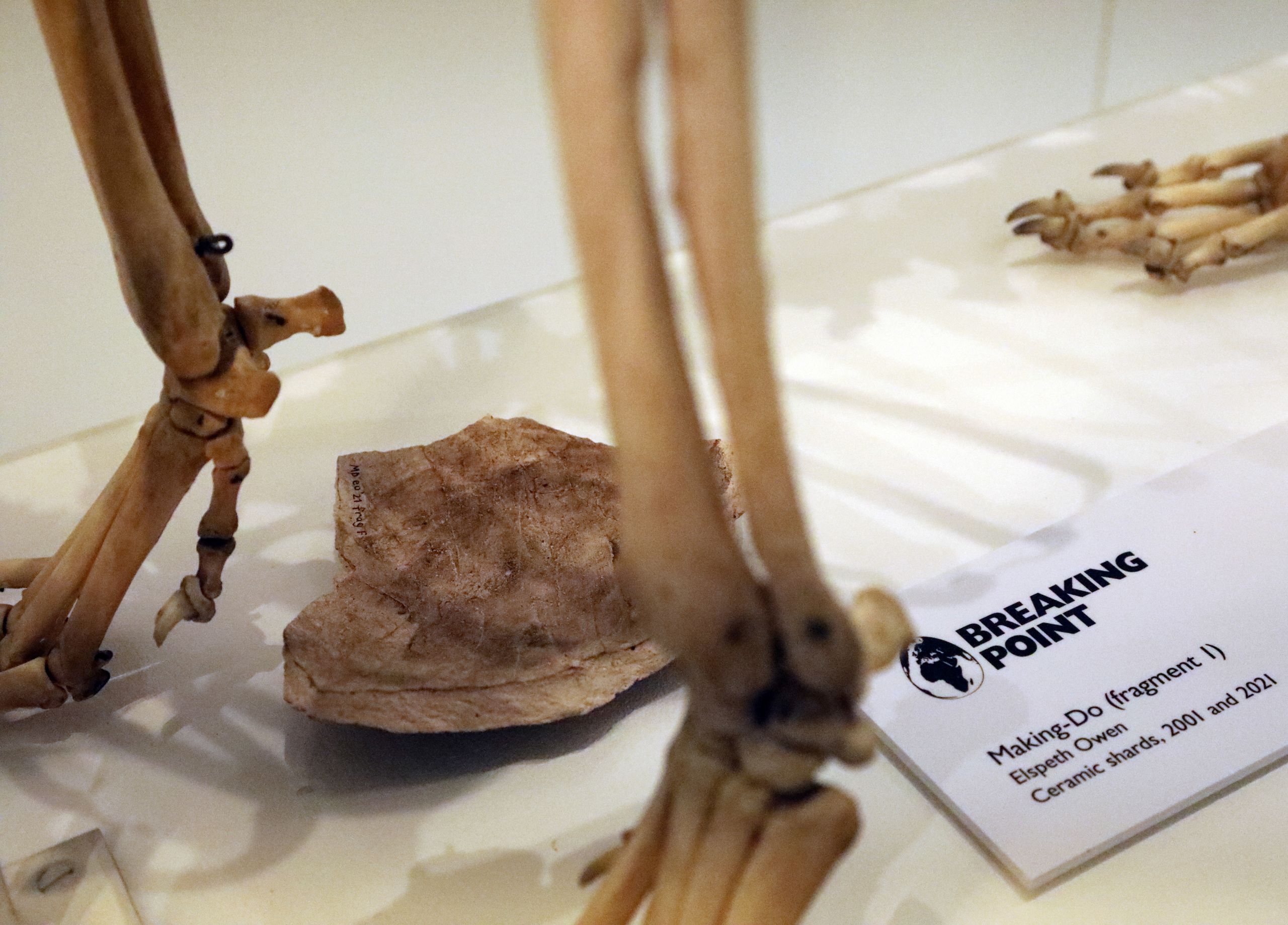
One of artist Elspeth Owen's ceramic egg fragments (2001 and 2021) on display in the Museum of Zoology
One of artist Elspeth Owen's ceramic egg fragments (2001 and 2021) on display in the Museum of Zoology
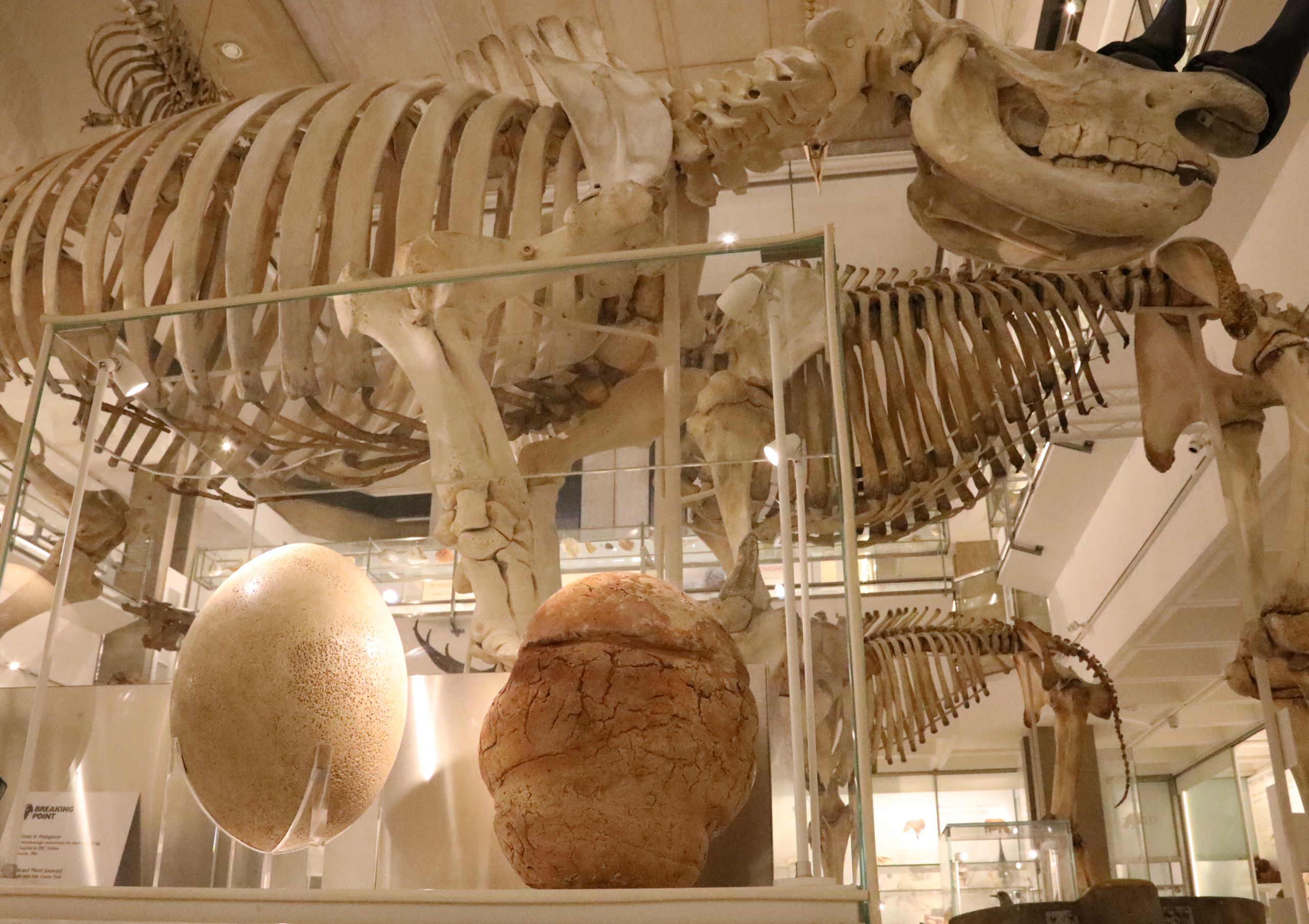
Elspeth Owen's clay egg (centre) displayed alongside the elephant bird's egg (left) reassembled by David Attenborough in 1960
Elspeth Owen's clay egg (centre) displayed alongside the elephant bird's egg (left) reassembled by David Attenborough in 1960
“Mending is possible,” Owen says: “If we just despair about the situation, we can’t possibly survive it. When you break something, sometimes you think, “Oh well, that’s the end of it” but other times you think “I might just be able to make-do and mend it”. It’s a very old slogan but I’d really like people to think more about mending, reusing and repairing things, and holding things precious.”
Owen has mixed feelings about museums with their dedication to preserving and storing things when, she feels, we have so many more urgent problems to solve in the world today. But she is fascinated by how the skeletons in the museum have all been mended, reassembled and held together with metal, as well as the shadows they cast.
“I positioned the fragments to give a sense of dangerous precariousness”, she says: “This one looks like it’s about to be stamped on by a prehistoric foot.”
“I feel like a fox, dodging, dropping things under there, and then running away. I’m provoking I suppose, provoking people to think and take action.” - Elspeth Owen
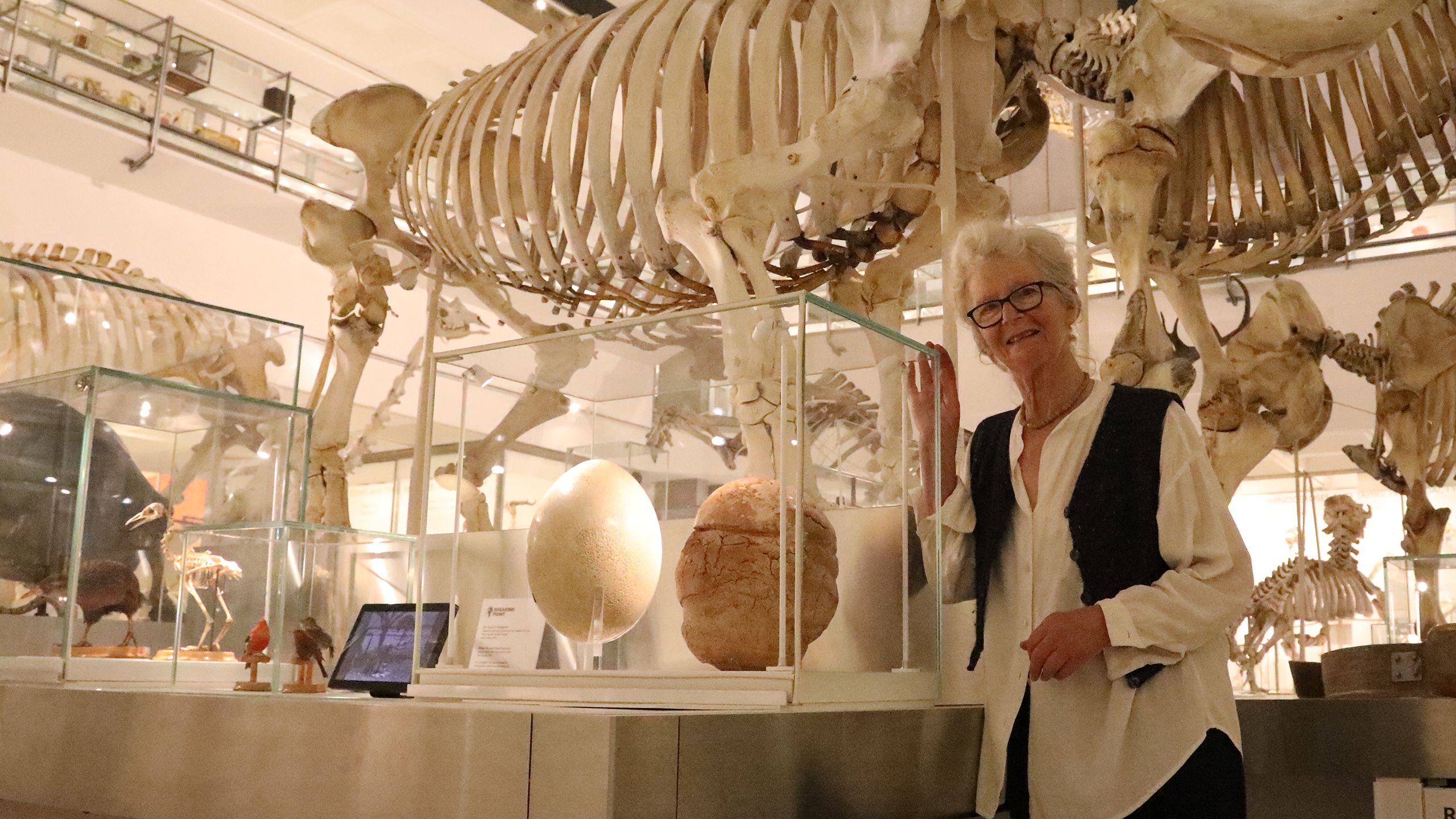
Jack Ashby, the Museum of Zoology’s Assistant Director says: “The fragility of ceramics is a brilliant metaphor for the vulnerability of life on our planet, a key message we try to get across in everything we do here.
“Some people will visit not expecting to find contemporary art here. Hopefully this will give them a new perspective on our collections and the wider issues. Equally art-lovers who might not normally come to a zoology museum will discover a whole lot more about life on Earth.”
Breaking Point: fragility in clay and nature is the second in a series of collaborations between the Museum and the Arts, Science, and Conservation Programme at Cambridge Conservation Initiative, which shares the David Attenborough Building.
Story published 21st July 2021

